Find answers to more questions using the resources below.




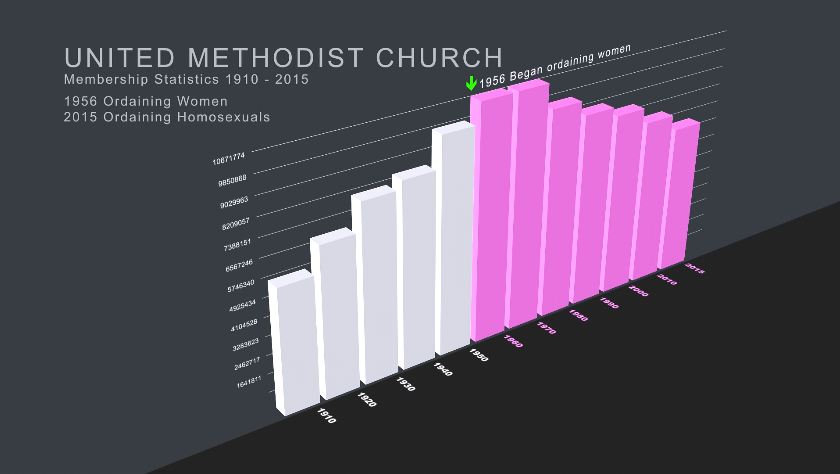
On May 4, 1956, in Minneapolis, Minnesota the General Conference of the Methodist Church approved full clergy rights for women. Since then they have also experienced a catastrophic decline.
At their 2012 General Conference Rev. Adam Hamilton told the full body "At the current rate of decline from the last five years, we have less than 50 years of The United Methodist Church in the United States”.
Mark Tooley, president of the Institute on Religion & Democracy and a practicing Methodist, told The Christian Post that he did not feel confident in the survival of the UMC in America. "Methodism in the U.S. has lost membership every year since 1964. It has lost over 4.5 million members. There is nothing in its U.S. policies that can or will reverse the decline in the near future," said Tooley.
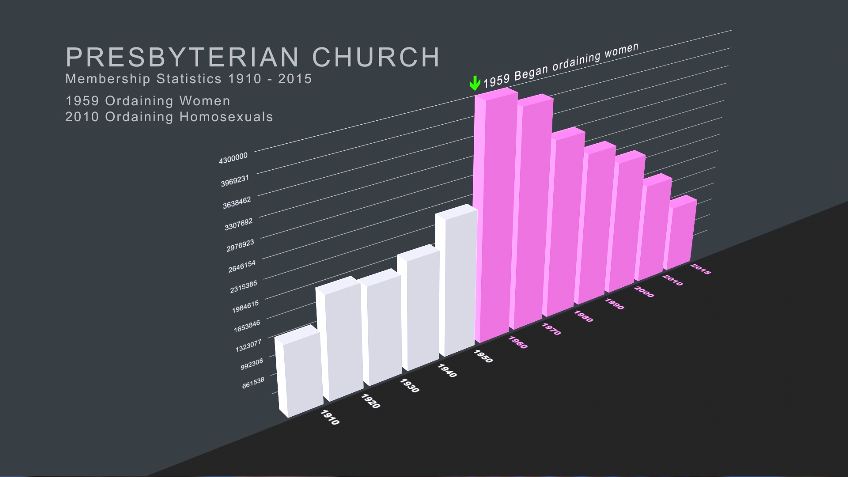
The U.S. Presbyterian Church began ordaining women in 1959 urging it would help them grow their church. In 60 years the church had declined by over 55%. The PC(USA) now reports 1.84 million members, that’s less than half of its peak membership of 4.25 million and down from 1.95 million members in 2011. In the last 10 years their membership has declined by 500,000.
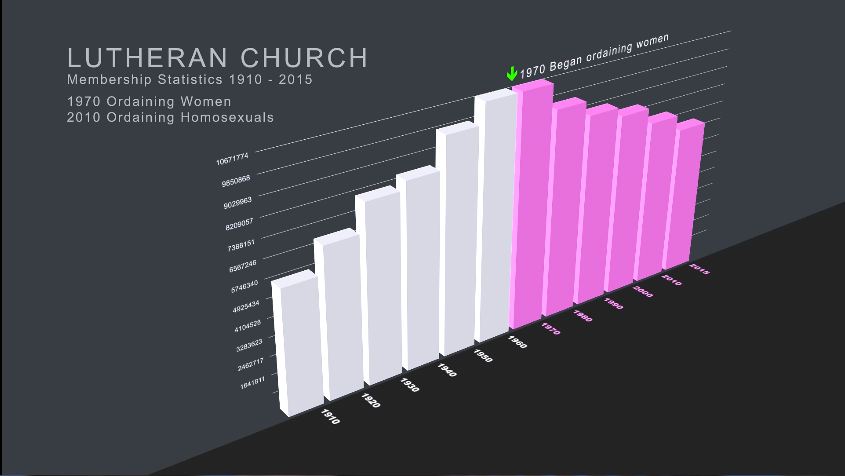
In America ELCA is the largest Lutheran body in the USA. The church bodies that formed the ELCA began ordaining women in 1970 when the Lutheran Church in America ordained the Rev Elizabeth Platz. The ordination of women is now non-controversial within the ELCA.
From their peak membership of 5,288,048 in 1987 only 4,059,785 Lutherans remained in ELCA in 2011, In all, this is a “staggering loss of over 1.2 million members, or 23% of their membership,” says Rev. Kevin Vogts.
According to data from the Barna Group, Between 1997 and 2004, churches lost tens of thousands of Sunday school programs, and more recent studies show that enrollment has fallen across denominations. From 2004 to 2010, for example, Sunday school attendance dropped nearly 40 percent among Evangelical Lutheran churches in America.
One reason that was noted for the decline was that as women pastors took over churches it seemed there was a corresponding number of men that become disengaged.
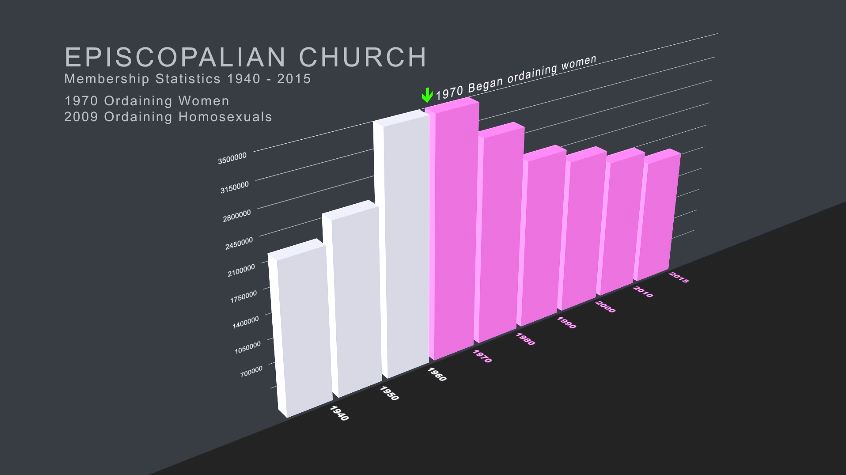
The USA Episcopal Church which began ordaining without regard to gender in 1976 experienced a precipitous decline both in baptized members and average weekly worship attendance according to Christian Post Reporter. “In 2010, TEC membership in the United States dipped below the 2-million mark, which is far removed from its peak membership of approximately 3.6 million in 1966.”
In 1974, in the United States, 11 women (known as the "Philadelphia Eleven") were controversially ordained to the priesthood in Philadelphia, Pennsylvania. Four more women (the "Washington Four") were ordained in 1975 in Washington D.C. All of these ordinations were ruled "irregular" because they had been done without the authorization of the Episcopal Church General Convention. The ordinations were regularized in 1976 following the approval by the General Convention of measures to provide for the ordination of women to the priesthood and the episcopate.
By Rod Dreher • July 8, 2012, 9:07 AM “More sunny news for your Sunday morning: numbers from the Episcopal Church show a stunning collapse in church attendance between 2000 and 2010. It’s down 23 percent overall, with some dioceses in far steeper decline than that. Pittsburgh, for example, has lost 73 percent of its churchgoing Episcopalians over that time period. That’s nearly three out of four Episcopalians in Pittsburgh, gone within a decade. San Joaquin saw four out of five of its people stop coming to church in the same period.”
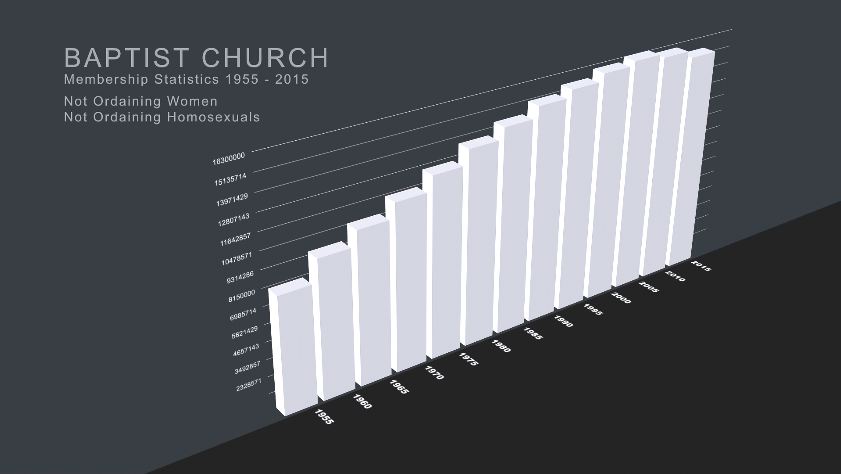
When during this same time some in the Southern Baptist churches began to lobby for women’s ordination and independently follow the practice, Baptist leaders brought the matter to their 1984 convention in Kansas City. After much vigorous debate the Southern Baptist voted to do more to empower their women for ministry while maintaining the Bible mandate that only men would be ordained as pastors and elders. In the 20 years following this decision the Southern Baptist membership climbed to over 16 million and today they remain the largest protestant church in North America.
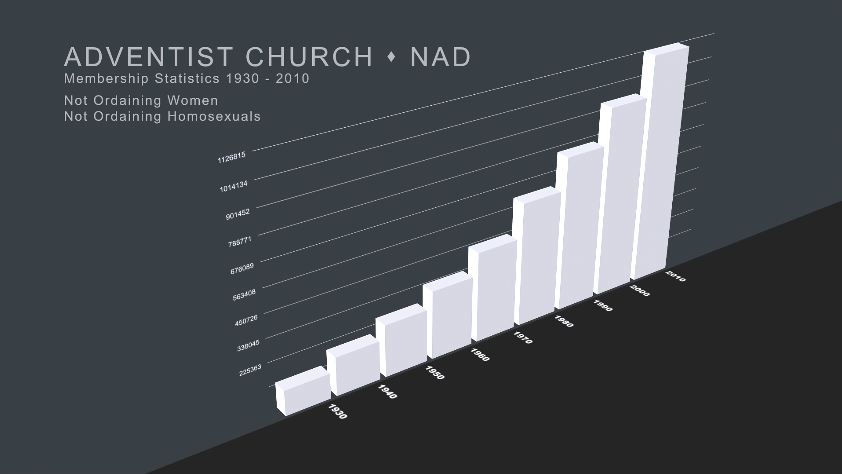
In 1863, the Seventh-day Adventist church was organized as a denomination. In the following years, to the present, the Adventist church has climbed to over 1 million members in the north American division. We are now at the same cross roads as other major denominations. What we decide regarding the ordination question is going to make a big difference in the future growth, mission unity, and theology of the Seventh-day Adventist movement.
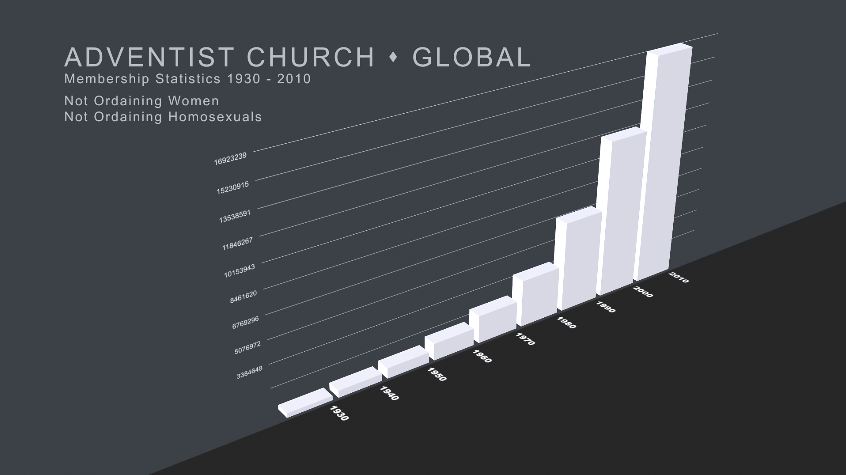
In 1863, the Seventh-day Adventist church was organized as a denomination. In the following years, to the present, the Adventist church has climbed to over 18 million members globally. We are now at the same cross roads as other major denominations. What we decide regarding the ordination question is going to make a big difference in the future growth, mission unity, and theology of the Seventh-day Adventist movement.